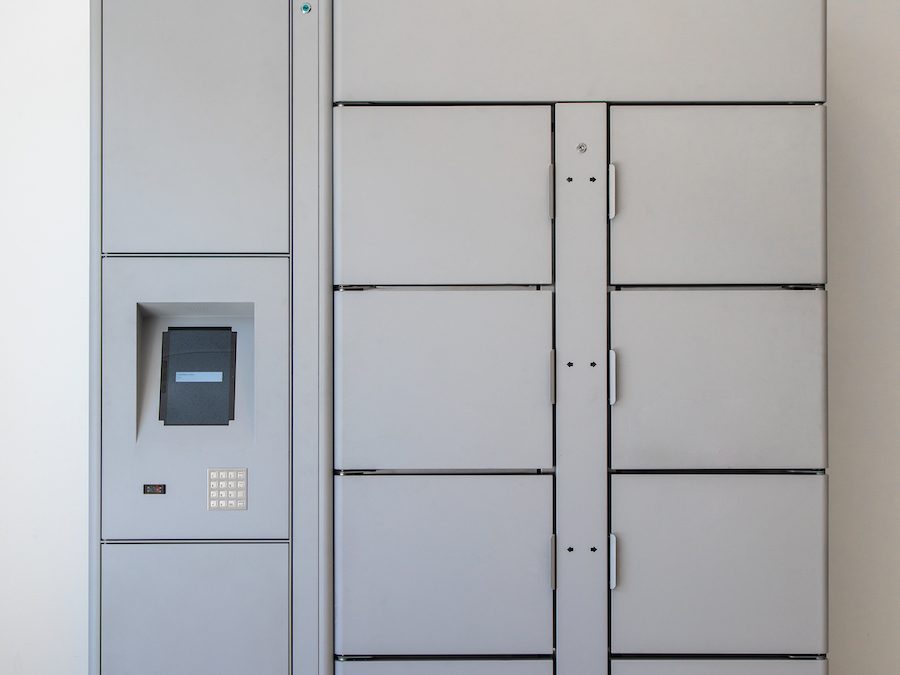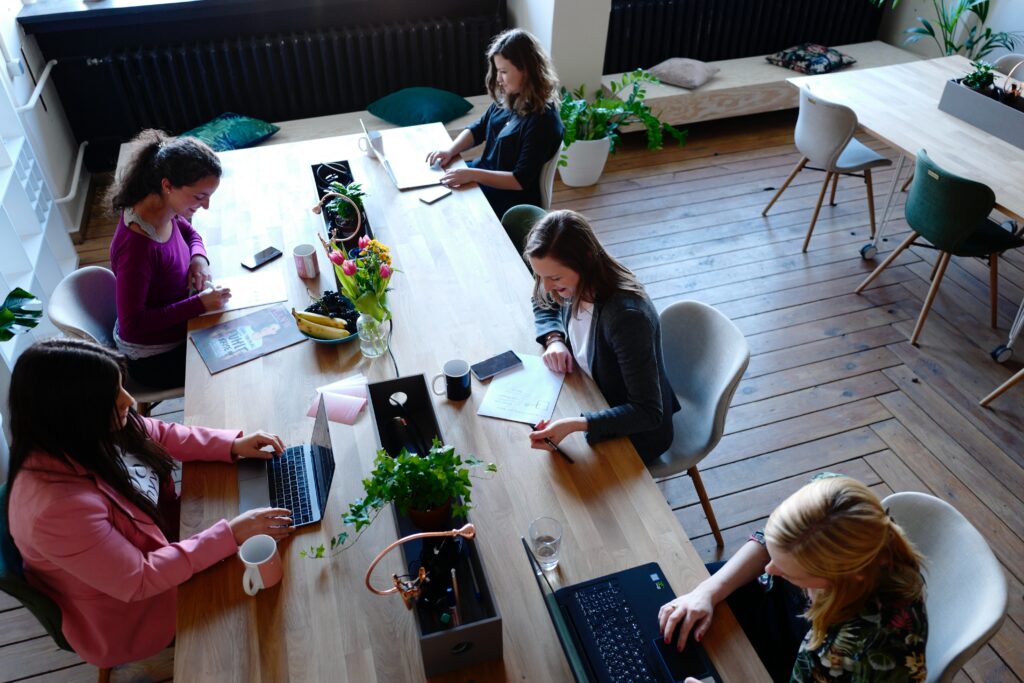Smartlocker technology is part of our world – especially as our habits and behaviors change in the context of the ongoing pandemic. By now, most people in urban areas have seen these lockers in grocery stores and mailrooms. Over time, the usage and implementation of these lockers will evolve to meet our needs and demands in new ways.
With 2022 just around the corner, let’s take a look at four possible smart locker use cases for the coming year – each one a unique approach to our shared spaces and our common need for safe and efficient delivery models.
Coworking Spaces
In the years leading up to the pandemic, coworking spaces took off around the country. For those that aren’t familiar with the concept, a coworking space is a curated and often spacious area where freelancers, entrepreneurs, and small teams can join or even rent space temporarily or long term. There are often separate conference rooms, desks, chairs, lounge areas, and sometimes even cafes. Coworking spaces are essentially offices for people who need more flexibility and adaptability.
This model has been particularly popular among working moms, artists, creatives, as well as start-up enterprises. Basically, it is a great option for anyone who requires fluidity in their schedules but still needs a quiet, controlled environment to do their work.
Women-focused spaces have especially flourished with a focus on empowerment, safety, and community. Examples include Modern Well and The Coven, both located in the Twin Cities.
Professionals are slowly returning to these spaces now that vaccines are more widely distributed. And with this comes an opportunity for people to utilize the conveniences of smart lockers. This could be true from deliveries from an outside supply chain, handoffs between colleges sharing the space with different schedules, and would improve accessibility to coworking space resources and technology that people need to transfer to one another in a safe and efficient way.
With skyrocketing rent prices in most major cities along with shifting schedules and desires around work, the coworking model seems here to stay and ready to further grow. Smart locker use can smooth and aid that progression as we all tentatively leave our homes again, put on real pants, and re-enter the world professionally and physically once more.
Local Tourism Offices And Travel Centers
National parks are all the rage, van life is a whole lifestyle, and people are desperate to see new places and experience meaningful travel destinations.
This presents a window of opportunity for local tourism offices, travel centers, national parks, and other travel favorites especially in summer 2022 when flocks of people throng to beautiful locales looking for an experiential vacation.
In particular, national parks and other natural areas saw an extreme influx of humans at particular times during the year. The beauty of these spaces is that they are more accessible than ever to people. With this comes challenges of crowd control, traffic, and long-term impact on vulnerable ecosystems.
Smart lockers can be used in park office settings to safely and efficiently distribute keys, pamphlets, binoculars, maps, camping gear, telescopes, park passes, and more. These uses can be applied to historic towns, historical memorials, animal refuges, and other areas of high traffic and high turnaround. By increasing the efficiency of these offices and centers, the staff is better able to focus on connecting and educating visitors – focusing on safety, sustainability, individual responsibility, and fun as opposed to office logistics.
Libraries
There’s no reason why smart lockers in a library should be a unique case – it’s a system that makes a ton of sense and will hopefully take off in communities around the country in 2022.
For reasons similar to co-working spaces, libraries can use smart lockers as a way to efficiently and conveniently distribute literature, textbooks, and rentable technology to people – during and outside of building hours. This will make necessary materials available to individuals no matter their hectic schedules, while also freeing up the time of library specialists for research, education, and assistance opportunities within their field.
Health Care Centers And Free Clinics
Regardless of which side of the aisle your politics fall, you can probably agree on the fact that our country’s healthcare system has vast room and an urgent need for improvement. With the added pressure and trauma on healthcare professionals still weathering the impacts of this pandemic, we are desperate for sustainable, efficient, accessible systems and technology around health and health care. These topics are massive. There isn’t one simple solution and often, the obstacles we face in giving and receiving adequate care are nuanced – with layers of policy complicating each step of a process.
Here’s one thing we can do: incorporate smart lockers into healthcare scenarios where it makes sense. This will change and unfold according to different communities’ needs – but part of the beauty of smart lockers is that they are adaptable and still predictable, technology that can provide necessary security and privacy within the medical field.
Let’s look at the case of Neo Hutiri in South Africa. Hutiri is an inventor and innovator. When he was diagnosed with TB, he had to go to a clinic to receive care and medication – his experiences there sparked an idea.
He invented Pelebox, a version of a smart locker where patients can unlock their locker with a one-time pin to retrieve their prescriptions. This invention simultaneously provided privacy for individuals with taboo health conditions such as HIV, while cutting down wait time from over 3 hours to just under 40 seconds.
In the context of pharmacies, free clinics, and other community health centers, the impacts of smart locker use could have sweeping, positive impacts and be one small piece in the puzzle of solutions needed to provide equitable care to all people.





